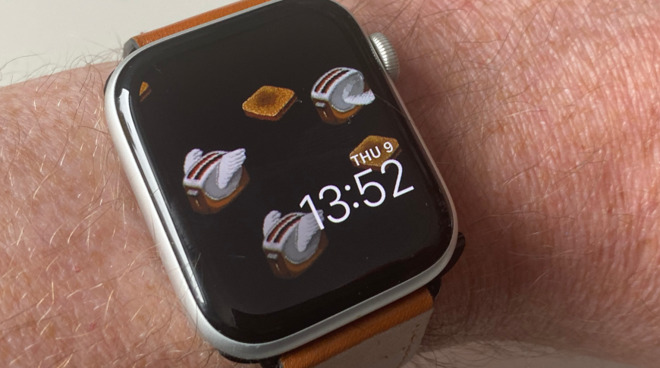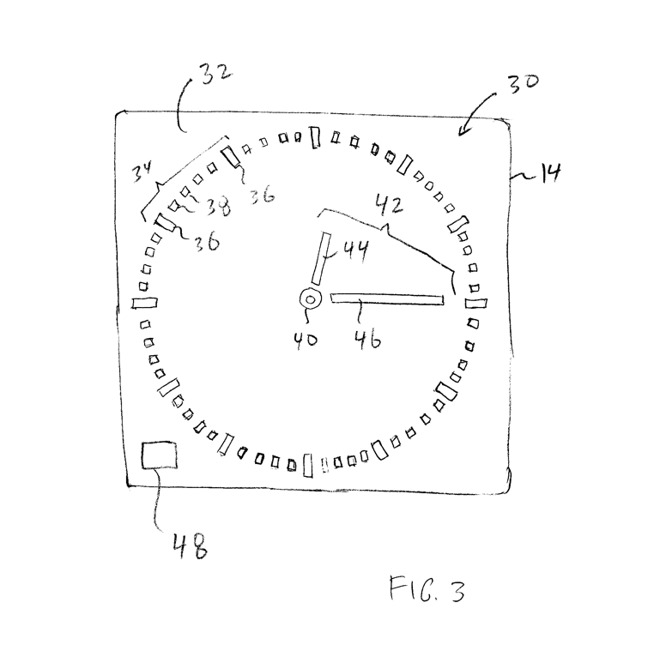Apple works to avoid screen burn-in on Apple Watches
New proposals from Apple may see always-on Apple Watch faces alter their images to avoid old-style screen burn-in.

Alas, there won't be an After Dark screensaver for Apple Watch. But the Flying Toasters would fix the problem.
The Apple Watch is about as far away as you can get from devices like the Macintosh SE/2 and Macintosh IIfx of the last century, but it seems it could be prone to a problem that dogged those and all computers with CRT screens. Apple wants to make sure that an image which stays on screen for a long time, doesn't damage the display and appear to stay there forever.
"Electronic Devices With Display Burn-in Mitigation," US Patent Application No. 20200218204, details steps Apple has devised for avoiding the problem. It's likely that at least some of these are already present in the Apple Watch Series 5, if not earlier models, but this is the first time solutions have been presented.
"Burn-in may result when a static image is displayed on a display for an extended period of time," explains the application. "This can cause uneven wear on the pixels of the display. If care is not taken, burn-in effects can lead to the creation of undesired ghost images on a display."
In theory, this could affect iPhones or iPads which display the same app icons in the same place. However, those devices go to sleep when not used and the Apple Watch is now able to show at least some elements all the time, and so greatly increase the risk of burn-in.
"A watch face image on the display may contain watch face elements such as watch face hands, watch face indices, and complications," says the application. "To reduce burn-in risk for watch face elements, control circuitry in the electronic device may impose burn-in constraints on attributes of the watch face elements such as peak luminance constraints, dwell time constraints, color constraints, constraints on the shape of each element, and constraints on element style."
"These constraints may help avoid situations in which static elements such as watch face indices create more burn-in than dynamic elements such as watch face hands," it continues.
The whole application is about how Apple can electronically mitigate the problem by balancing what it calls "dwell time," the time a user spends actually looking at a screen, and reducing the intensity of that display.
"[Watch face hands] are in motion and therefore do not linger for prolonged periods of time over any given pixel or set of pixels relative to more persistent watch face elements such as indices [and complications]," says the application. "To reduce the burn-in risk... control circuitry can be configured to dynamically adjust the locations... during operation."
So Apple's proposal is to have the Apple Watch adjust the position on screen of key elements. It may be so subtle that it isn't immediately obvious, but Apple plans "repeated radial inward and outward movement" to spread "out the pixel wear."

Detail from the patent application. Watch hands are not a burn-in problem, but all the other elements here could be
"If desired, the overall watch face artwork that is displayed on display (e.g., hands, indices, and/or other watch face elements) may be scaled in size," continues the application. "For example, always-on artwork may be adjusted to have 95% of its nominal (100%) size to help reduce burn-in effects."
Regrettably, nowhere in the patent application does it suggest giving us After Dark-style screensavers for our Apple Watches.

Alas, there won't be an After Dark screensaver for Apple Watch. But the Flying Toasters would fix the problem.
The Apple Watch is about as far away as you can get from devices like the Macintosh SE/2 and Macintosh IIfx of the last century, but it seems it could be prone to a problem that dogged those and all computers with CRT screens. Apple wants to make sure that an image which stays on screen for a long time, doesn't damage the display and appear to stay there forever.
"Electronic Devices With Display Burn-in Mitigation," US Patent Application No. 20200218204, details steps Apple has devised for avoiding the problem. It's likely that at least some of these are already present in the Apple Watch Series 5, if not earlier models, but this is the first time solutions have been presented.
"Burn-in may result when a static image is displayed on a display for an extended period of time," explains the application. "This can cause uneven wear on the pixels of the display. If care is not taken, burn-in effects can lead to the creation of undesired ghost images on a display."
In theory, this could affect iPhones or iPads which display the same app icons in the same place. However, those devices go to sleep when not used and the Apple Watch is now able to show at least some elements all the time, and so greatly increase the risk of burn-in.
"A watch face image on the display may contain watch face elements such as watch face hands, watch face indices, and complications," says the application. "To reduce burn-in risk for watch face elements, control circuitry in the electronic device may impose burn-in constraints on attributes of the watch face elements such as peak luminance constraints, dwell time constraints, color constraints, constraints on the shape of each element, and constraints on element style."
"These constraints may help avoid situations in which static elements such as watch face indices create more burn-in than dynamic elements such as watch face hands," it continues.
The whole application is about how Apple can electronically mitigate the problem by balancing what it calls "dwell time," the time a user spends actually looking at a screen, and reducing the intensity of that display.
"[Watch face hands] are in motion and therefore do not linger for prolonged periods of time over any given pixel or set of pixels relative to more persistent watch face elements such as indices [and complications]," says the application. "To reduce the burn-in risk... control circuitry can be configured to dynamically adjust the locations... during operation."
So Apple's proposal is to have the Apple Watch adjust the position on screen of key elements. It may be so subtle that it isn't immediately obvious, but Apple plans "repeated radial inward and outward movement" to spread "out the pixel wear."

Detail from the patent application. Watch hands are not a burn-in problem, but all the other elements here could be
"If desired, the overall watch face artwork that is displayed on display (e.g., hands, indices, and/or other watch face elements) may be scaled in size," continues the application. "For example, always-on artwork may be adjusted to have 95% of its nominal (100%) size to help reduce burn-in effects."
Regrettably, nowhere in the patent application does it suggest giving us After Dark-style screensavers for our Apple Watches.

Comments
They should just have the watch use the same 3D effect that the iPhone does so as you change the orientation of the watch the image shifts. solves the burn-in problem and adds a cool effect
The difference here, regarding the patent and the AW, seems to be localized pixel shifting instead of the entire screen shifting in a standard pixel shift scenario. I think the net result of what Apple is doing increases the efficiency of pixel shifting (only shifting the necessary pixels and not the entire screen) while being less taxing on the battery. Mind you, this is just my opinion.
Also, I’m not sure the “display-walk” would be random (or wide) enough to accomplish its intended purpose.
But back in 2008, When I was employed as an embedded designer of primarily motor controls, I was planning on putting an OLED display on a new controller, replacing the LED displays we usually used.
Even back then, it was suggested that a “random walk” of the display-image be employed, to cut down on burn-in.
So the basic idea isn’t new; but Apple’s methods might be more efficient, less noticeable, and/or more effective, than the more widely-used anti-burn-in techiques.
My feeling is that it is easier on battery-life; by only having to recalculate a small number of pixel-positions at any one time.